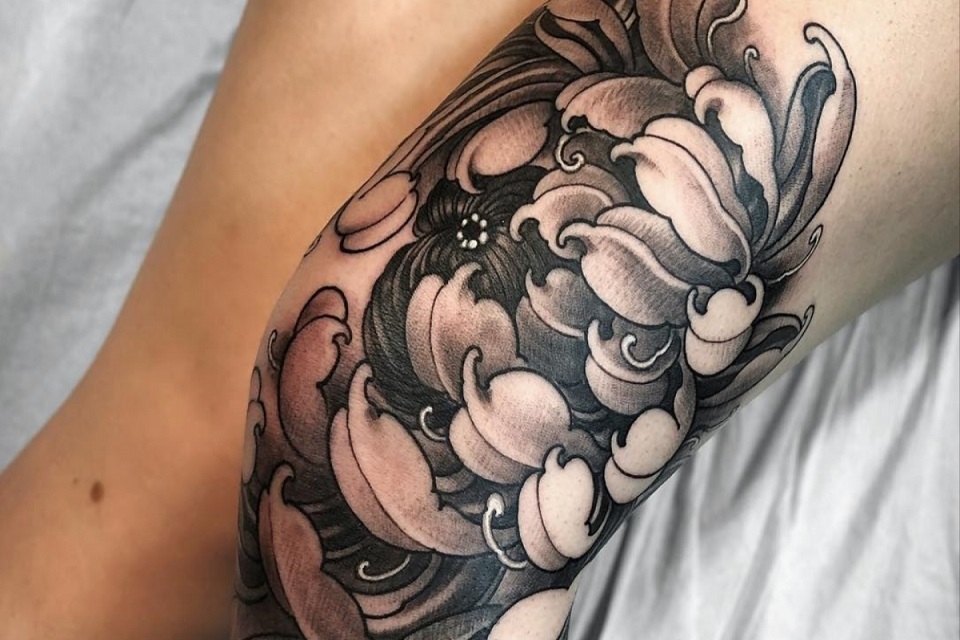When people think of Japanese tattoos, they picture Ryu, the dragon tattoo. It’s the most popular tattoo in Japan and the top ten in Asia. The dragon is often worn as a sleeve, chest, back, or leg tattoo. Among the Japanese, it’s a symbol of wisdom and balance. The design has influenced numerous western tattoo designs and remains one of the most coveted prints globally.

Nonetheless, Ryu isn’t the only tattoo with roots in Japan. Here are some of the lesser-known Japanese tattoo motifs:
Koi
Koi is a magnificent fish of oriental origin that is surrounded by ancient myths. Although its origin is in China, it’s widely celebrated in Japan. The mythology surrounding Koi is both beautiful and symbolic as it’s considered a representation of many revered masculine qualities.
The fish is known to climb waterfalls, a true display of resilience; then, it lies on the chopping board awaiting slaughter without a quiver when caught. Among the Japanese, Koi serves as a symbol of a warrior.
Koi flags are a central feature in the boy’s day festival in Japan, where people celebrate boys’ happiness and good health. Traditionally, the flag is raised for each son in the family. In addition, Koi tattoos are often drawn with flowing water to symbolise control, courage and perseverance.
Another motif associated with Koi is the Dragon’s Gate legend. Counterpunch Tattoo Removal, specialists in tattoo removal, says that it describes that any koi that climbs the falls at the Dragon’s Gate on Yellow river becomes a dragon. The legend is associated with aspiration and advancement.
Tora
This tiger tattoo is often used to represent courage and strength. The tiger is considered a supreme land animal across many Asian cultures. Moreover, it’s believed to ward off disease and bad luck.
The White Tiger is one of four sacred animals: the Black Tortoise of the north, the Azure Dragon from the east, the Vermilion Bird of the south and the White Tiger of the West. They are also known as the four guardians.
On many prints, the tiger is drawn fighting demons, Oni. In addition, Shoki, the demon queller, often features alongside the tiger tattoo.
Karashishi
Also known as the Foo Dog of Asia, Karashishi is extensively used in Asian tattoos. Contrary to the name, Karashishi is a lion. In many Asian cultures, it’s called the Lion of Buddha despite having origins that predate Buddhism.
Karashishi is often depicted with a redhead and thought to drive away evil spirits. The creature symbolises strength and courage. The legend goes that the Lion Dogs are often thrown off a cliff by their mothers when they’re still cubs and only the strongest survive.
The Foo Dog is often presented as a pair at gated entrances. In other symbolic representations, it’s drawn with one paw resting on a sphere curved as an open latticework. The pointed ears and curly manes on a Karashishi tattoo closely resemble a dog. This may explain the confusion in naming the creature.
Hou-ou
This is the most iconic mythological bird, the phoenix. It’s a recurrent motif in numerous cultures like the Egyptians, Greeks and ancient Romans. The legend of the phoenix describes an immortal bird that burnt itself only to resurrect in three days.
The Hou-ou tattoo is a worldwide symbol of an undying soul and immortal life. It also represents rebirth and triumph.
Zugaikotsu
The skull tattoo, Zugaikotsu, is misunderstood. Many people associate the tattoo with death, fear and anger. However, the meaning is much more profound. Zugaikotsu was originally used as a symbol of change and a celebration of a great life.
The Japanese draw a lot of symbolism from their tattoos. They often use mythical creatures to represent different traits and express their culture. If you are looking to get a new tattoo, turn your eye to the Japanese. They have a lot of inspirational options. Because many foreigners
who are unfamiliar with Japanese culture desire to get their sort of tattoo artwork done,
there may be some regrets later on, but do not fear because there are many specialists,
such as Los Angeles tattoo removal, who can truly make a difference.




